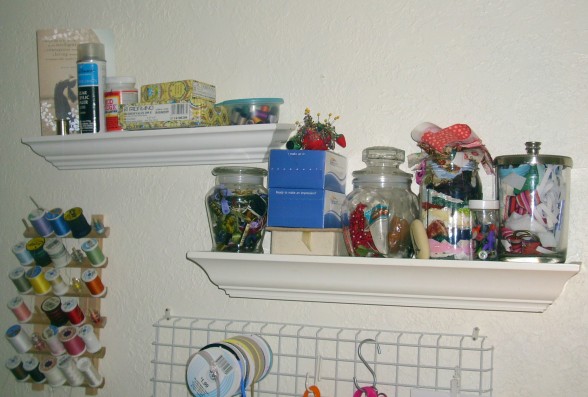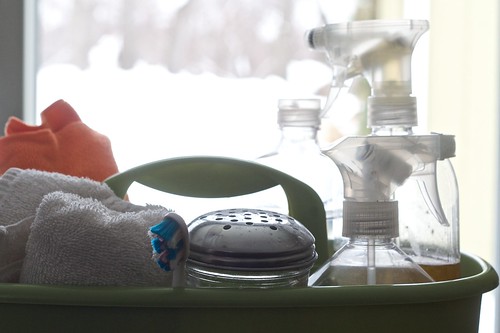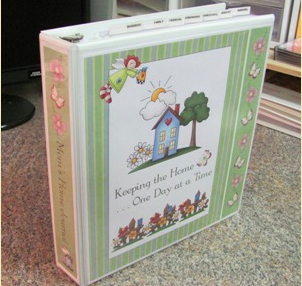Loading the kids into the car is a significant endeavor – making sure we have a clean diaper, putting on socks, shoes, coats, and finally loading them in and strapping them into car seats. The whole process may take up to 30 minutes of my day. Pack a quick snack, an extra diaper, and we are off. Arriving at our destination, it takes anywhere from 5-10 minutes to remove children from the car to the grocery cart. Halfway through the store, child #2 begins to melt down. The snack holds them over temporarily (and yes, I feed them at home before we left!). By the end of the store excursion, child #1 has to use the bathroom. Ten minutes later we are back to the store aisles. And we are only at stop number one of the intended three. Does this sound familiar? After going through this experience numerous times prior, I decided it was time to make a better strategy for grocery shopping. I have been practicing these methods for over a year now, and can highly recommend it!
1. Limit your trips.
Why not make it easier on your stress levels by limiting our trips to the store? Consider starting with a weekly trip and see if you can gradually stretch it.
2. Limit your stops.
Why do we find it necessary to visit three different grocery stores to get all our groceries? Many times it may be due to various prices differences at each location, coupons, or sales. When you really think about it, is the extra time involved and the added stress of loading and unloading really worth it? When I stepped back to compare: driving, extra gas, and the added tiredness that entailed were not necessary. Find a store that you can make all your purchases, adapt your menu so that you can get all the ingredients at one location and stick with it. It will be well worth it – your whole family will be more joyful as a result.
3. Order online.
It is becoming so much easier now to actually order your groceries online. How sweet is that? Check out Safeway, New Seasons (local natural grocery in the Portland metro area), Organics to You, and other online delivery systems. Ask around in your area. Many will allow you to order online and you can pick up in store to save on delivery fees, but also save you all the time and effort of touring the store. For a busy mommy, that sounds like a wonderful alternative.
4. Make a menu plan. Make a monthly plan for real simplicity.
I have been a huge advocate of monthly menu planning and my mission was only re-affirmed after a recent season of carelessness in this area which had to lead to sky-rocketing grocery bills and frequent trips to the store. Menu planning in general is definitely not my favorite activity. I would much rather just be in the kitchen preparing the food rather than planning what to make. But taking the time to plan your menu not only ultimately saves you significant time, but it will also help save you money. Why not take a simple step to simplify it for yourself?
Where to Start?
1. Start with a simple plan.
If you are new to menu planning, please start by beginning with just a weekly menu plan, and once you are comfortable with that to adjust to two weeks. Start your weekly plan by making a list of 7 dinners, 7 breakfasts and 7 lunches. Lunches can be mainly leftovers from the previous dinner if you make a bit extra. Breakfasts can be the same each week as we do it (see examples below). After you can make that work, build a monthly menu plan and work with the seasons. You will learn how much your family needs to make it through two weeks. You will also learn to stretch your food purchases in amazing and creative ways.
2. Figure out dinner themes to work from.
I have found it extremely helpful to start out my menu planning by making daily dinner themes. That way I had something to work around. I make a vegetable and rice stir fry or main dish salad every Monday, adding variation with different vegis and sauces. Tuesdays is always soup night, served with a biscuit or muffin. Increasing soups in your diet is an excellent way of increasing nutrition but also keeping the budget down. Fridays is pizza theme each week for family night. Making a large batch and serving it for different lunches or freezing a portion for another meal is also making the most of your time in the kitchen. Here are a few ideas:
Dinner Themes:
Monday – Stir Fry/Main Dish Salad
Tuesday – Soup
Wednesday – Fish/Lentils
Thursday – Mexican/Chicken/Casserole
Friday – Special Dinner – Pizza
Saturday -BBQ
Sunday – leftovers or eat out
Other themes could include: crockpot, Italian, etc. I have heard other creative ideas such as Meat Monday, Taco Tuesday, etc. Have fun and be creative! Anything to make meal planning enjoyable for your household.
Keep your breakfast and lunch plan simple by rotating the same schedule each week. Here is ours:
Breakfasts:
Monday – kefir smoothie, bread (muffin, bagel, or toast)
Tuesday – Oatmeal w/raisins & apples
Wednesday – kefir smoothie, bread (muffin, bagel, or toast)
Thursday – Oatmeal w/raisins & apples
Friday – Eggs or French Toast
Saturday – Pancakes
Sunday – Granola (a quick breakfast before church)
Lunches:
Lunches are a bit more flexible, as often times we will have leftovers on hand to eat from a previous meal, but if not, I keep the ingredients on hand for these ideas:
Monday – Ham & Cheese sandwiches, fruit/vegi
Tuesday – Egg Salad Sandwiches, juiced vegi & fruit
Wednesday – Salmon Melts or Tomato Soup & grilled cheese/ham sandwiches, fruit, salad
Thursday- Quesadillas, burritos, or baked potato bar (chili, cheese, lettuce, misc toppings)
Friday – Peanut Butter & Jelly or regular sandwiches
Saturday – Leftovers (Saturday is generally leftover day or clean out the fridge day)
3. Make a list of 4 ideas for each of those themes.
Now simply collect ideas for 4 weeks of recipes around those themes. Chicken Ceasar Salad, Taco Salad, Cobb Salad are some of our Monday choices. Jot them down on your monthly calendar.
4. Compile a master shopping list for the items needed to make those meals.
Go through each recipe and make a master shopping list of all the ingredients required. Now each month you have the same list of groceries, and you can keep a memorized list on your computer, phone, or notebook. You can see my master grocery list here. We use the Shopper app for its usefulness in organizing our shopping to the tee – aisle by aisle and keeping track of the costs in one.
5. Limit your shopping to one major stocking day, and one small refiller day in a months time!
A easy plan is to shop at the beginning of the month for all your staples, toilet paper, body products, meats, and dairy and produce for two weeks. I have found produce and dairy can last for two weeks successfully. Then make one extra stop halfway through the month to restock on produce and dairy. Or if you have a local farmer’s market, or farm stand, that would be a even better alternative.
6. Build a new monthly plan with each season.
You will appreciate the variety if you build a new monthly menu plan for each season: Spring, Summer, Fall, Winter. In this manner you can incorporate the more comfort foods for winter, and the light refreshing foods for summer. You can stick with a Spring/Summer and Fall/Winter plan as well, as I have done in the past. Now you only have to plan a menu 2-4 times a year! How nice is that? Care to join me? For inspiration, check out my Winter monthly menu plan and Spring/Summer plan from previous years.
I have experienced it first hand that doing a monthly menu plan can definitely save you money. I have saved at least $100 per month pursuing this method – which is certainly useful when you are striving to eat naturally on a budget.
Those are just some of my practical ideas for simplifying the grocery shopping adventures!
What tips do you have to share?
Other Menu Planning Ideas & Resources:
Weekly Menu Planning – by Crystal Paine
Healthy & Frugal Menu Planning Help Part 1 & Part 2- by Stephanie @ Keeper of the Home
Printable Monthly Menu Form
Printable Weekly Menu Form
Menu Planning: Saving Time in the Kitchen
Menu Planning Made Easy


 Stuff, stuff, stuff! Are you struggling to keep your head above water in maintaining your home in a simple and peaceful manner? It takes a bit of persistent effort to maintain a simple home, but it is well worth it, as you can turn your focus towards the more important things in life – relationships and hospitality.
Stuff, stuff, stuff! Are you struggling to keep your head above water in maintaining your home in a simple and peaceful manner? It takes a bit of persistent effort to maintain a simple home, but it is well worth it, as you can turn your focus towards the more important things in life – relationships and hospitality.

 Cleaning and scrubbing will wait ’till tomorrow, but children grow up, as I’ve learned to my sorrow. So quiet down cobwebs! Dust go to sleep! I’m rocking my baby. Babies don’t keep. – Ruth Hamilton
Cleaning and scrubbing will wait ’till tomorrow, but children grow up, as I’ve learned to my sorrow. So quiet down cobwebs! Dust go to sleep! I’m rocking my baby. Babies don’t keep. – Ruth Hamilton







 Today I welcome a guest post by Sherrin Drew. Sherrin is a wife and mother of one little boy and blogs at
Today I welcome a guest post by Sherrin Drew. Sherrin is a wife and mother of one little boy and blogs at